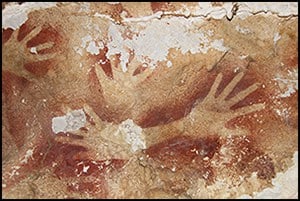Earlier this week, the journal Antiquity published a paper entitled ‘The global implications of the early surviving rock art of greater Southeast Asia’, which I was a co-author of. The paper touches on a number of rock art projects that have happened in the recent years: my contribution was on the rock art of Gua Tambun in Malaysia, which I investigated as part of my MA, and the paper also touches on the rock art of Cambodia that later became part of my PhD thesis. Other regions included Thailand, Myanmar and Indonesia – the last of which is fresh in our minds because of recent research that shows it was as old, if not older than the painted caves in Europe.

Since the discovery of the painted caves of France, rock art studies has tended to be dominated by Eurocentrism as the ‘origin’ of art. Far from arguing that Southeast Asia is the origin of art, we are beginning to see with Southeast Asia, and I expect in other parts of the world that the tradition of painting in rock surfaces was widespread, even in prehistoric times, and may have begun even before humankind started moving out of Africa into other parts of the world. This paper is a snapshot of rock art research in Southeast Asia, and I am glad to be part of it.
Links to the paper in article in Antiquity and some of the associated news stories:
The global implications of the early surviving rock art of greater Southeast Asia
Antiquity, 88(342): 1050-1064
New evidence of ancient rock art across Southeast Asia
Eureka Alerts, 25 November 2014
Ancient Rock Art Discovered Across Asia was Created by Prehistoric Humans
Science World Report, 26 November 2014
Ancient Rock Art Splattered Across Southeast Asia
Nature World News, 26 November 2014
Rock art origins reappraised
Phnom Penh Post, 28 November 2014
The rock art of Southeast Asia has been less thoroughly studied than that of Europe or Australia, and it has generally been considered to be more recent in origin. New dating evidence from Mainland and Island Southeast Asia, however, demonstrates that the earliest motifs (hand stencils and naturalistic animals) are of late Pleistocene age and as early as those of Europe. The similar form of the earliest painted motifs in Europe, Africa and Southeast Asia suggests that they are the product of a shared underlying behaviour, but the difference in context (rockshelters) indicates that experiences in deep caves cannot have been their inspiration.
Paper link here.

























Congratulations on the paper.